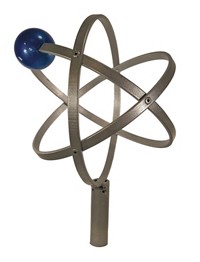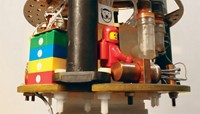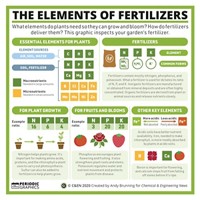Advertisement
Grab your lab coat. Let's get started
Welcome!
Welcome!
Create an account below to get 6 C&EN articles per month, receive newsletters and more - all free.
It seems this is your first time logging in online. Please enter the following information to continue.
As an ACS member you automatically get access to this site. All we need is few more details to create your reading experience.
Not you? Sign in with a different account.
Not you? Sign in with a different account.
ERROR 1
ERROR 1
ERROR 2
ERROR 2
ERROR 2
ERROR 2
ERROR 2
Password and Confirm password must match.
If you have an ACS member number, please enter it here so we can link this account to your membership. (optional)
ERROR 2
ACS values your privacy. By submitting your information, you are gaining access to C&EN and subscribing to our weekly newsletter. We use the information you provide to make your reading experience better, and we will never sell your data to third party members.
Education
Newscripts
Interactive tools for teaching chemistry
by Linda Wang
September 5, 2016
| A version of this story appeared in
Volume 94, Issue 35
Periodic table adds isotopes

What comes to mind when you think about isotopes? Radioactivity, perhaps? That’s only the tip of the iceberg.
A new interactive periodic table of the elements and isotopes, launched last month by the King’s Centre for Visualization in Science (KCVS) in Edmonton, Alberta, and the International Union of Pure & Applied Chemistry, aims to show the breadth of isotopes and their applications.
“This is not going to replace the periodic table of the elements. It really is a periodic table of the elements that also provides, for the first time, really detailed information about the isotopes of the elements,” says Peter Mahaffy of the KCVS. In addition to the usual periodic table information of an element’s symbol, atomic number, and atomic weight, the new interactive version includes a pie chart that indicates how many isotopes an element has and their relative abundance.
The development team hopes that the format will help students understand why atomic weights of some elements are not constants of nature, but are instead weighted averages that reflect the natural abundances of isotopes. The team also included information about isotope applications. For example, by clicking on the box for nitrogen, students will learn that 15N added to fertilizer can be used to track nitrogen uptake in plants and migration in soils.
High school teacher Sally Mitchell, who is currently an Albert Einstein Distinguished Educator Fellow at the Department of Energy’s Office of Science, says that when she taught students about isotopes, she seldom covered their applications. “This periodic table highlights some really great applications of isotopes in a visual way,” she says. “No more boring mathematical equations as the introduction to isotopes.”
Dan Leskiw, a high school chemistry teacher at Jasper Place High School, in Edmonton, says he used to have to assemble information on isotopes from different sites. “The new interactive periodic table provides a hub for students to begin their analysis and interpretation of the data.”
To check out the interactive periodic table of the elements and isotopes, visit isotopesmatter.com.
Augmented reality element blocks

Forget Pokémon Go. There’s a new augmented reality game in town for chemistry students. Elements 4D, an app created by start-up company Daqri, gives students the ability to interact virtually with the periodic table of the elements. To start, print, cut, and fold together paper blocks with element symbols. Then just hold a phone or a tablet in front of the blocks and watch them transform into digital blocks on the screen. Push two element blocks together, and watch the virtual chemical reaction take place. For example, bringing the blocks for gold and chlorine together forms gold chloride, turning both blocks a gold color. The app is available for iPhone or Android download, and the blocks and lesson plans are available for download at daqri.org.
Linda Wang wrote this week’s column. Please send comments and suggestions to newscripts@acs.org.





Join the conversation
Contact the reporter
Submit a Letter to the Editor for publication
Engage with us on Twitter